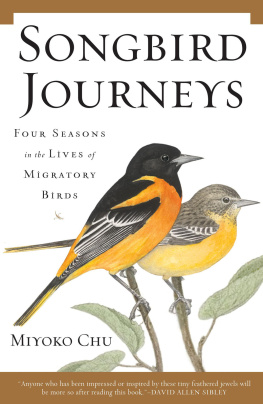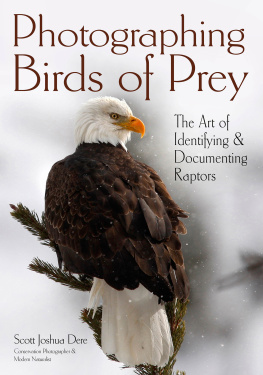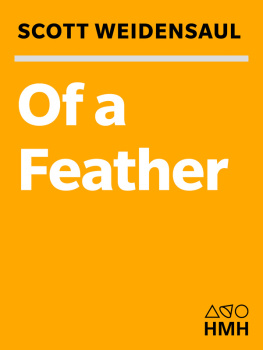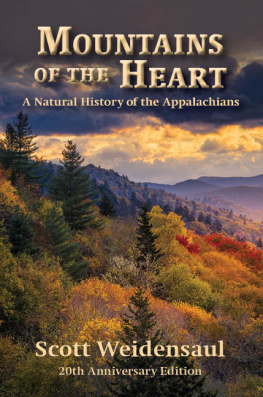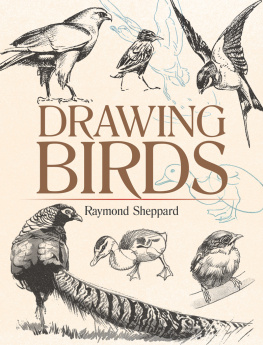Scott Weidensaul - A World on the Wing: The Global Odyssey of Migratory Birds
Here you can read online Scott Weidensaul - A World on the Wing: The Global Odyssey of Migratory Birds full text of the book (entire story) in english for free. Download pdf and epub, get meaning, cover and reviews about this ebook. year: 2021, publisher: W. W. Norton & Company, genre: Detective and thriller. Description of the work, (preface) as well as reviews are available. Best literature library LitArk.com created for fans of good reading and offers a wide selection of genres:
Romance novel
Science fiction
Adventure
Detective
Science
History
Home and family
Prose
Art
Politics
Computer
Non-fiction
Religion
Business
Children
Humor
Choose a favorite category and find really read worthwhile books. Enjoy immersion in the world of imagination, feel the emotions of the characters or learn something new for yourself, make an fascinating discovery.

- Book:A World on the Wing: The Global Odyssey of Migratory Birds
- Author:
- Publisher:W. W. Norton & Company
- Genre:
- Year:2021
- Rating:5 / 5
- Favourites:Add to favourites
- Your mark:
- 100
- 1
- 2
- 3
- 4
- 5
A World on the Wing: The Global Odyssey of Migratory Birds: summary, description and annotation
We offer to read an annotation, description, summary or preface (depends on what the author of the book "A World on the Wing: The Global Odyssey of Migratory Birds" wrote himself). If you haven't found the necessary information about the book — write in the comments, we will try to find it.
Scott Weidensaul: author's other books
Who wrote A World on the Wing: The Global Odyssey of Migratory Birds? Find out the surname, the name of the author of the book and a list of all author's works by series.
A World on the Wing: The Global Odyssey of Migratory Birds — read online for free the complete book (whole text) full work
Below is the text of the book, divided by pages. System saving the place of the last page read, allows you to conveniently read the book "A World on the Wing: The Global Odyssey of Migratory Birds" online for free, without having to search again every time where you left off. Put a bookmark, and you can go to the page where you finished reading at any time.
Font size:
Interval:
Bookmark:
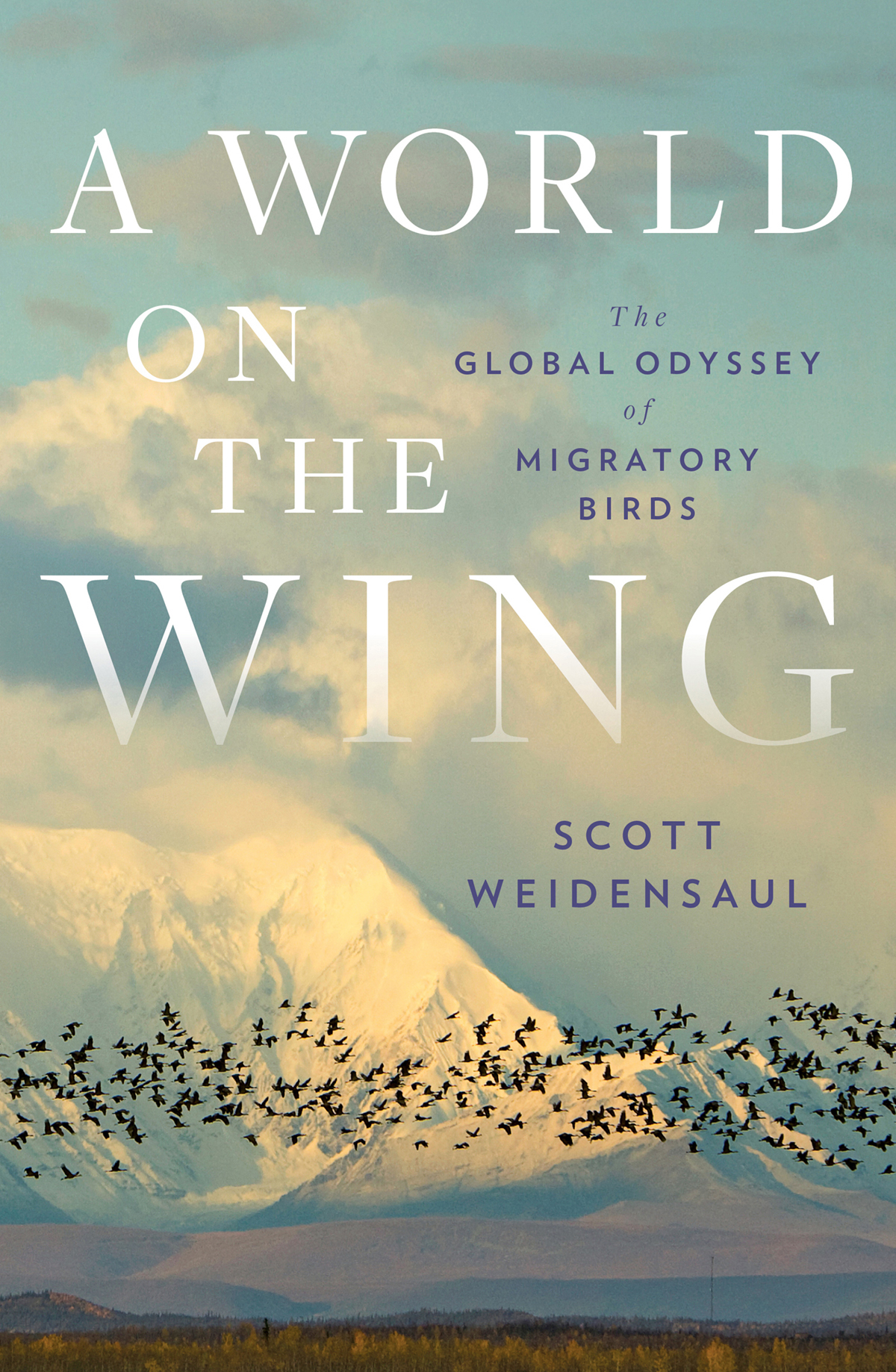

A
WORLD
on the
WING

The Global Odyssey
of Migratory Birds

SCOTT WEIDENSAUL

For Amy, as always (but even more than usual)
A WORLD on the WING
T undra may be the most gloriously comfortable mattress in the world.
A little damp, its true, which is why its a good idea to wear rain pants and a jacket, even on a clear, chilly morning like this onethe sun just touching the peaks of the Alaska Range with pink-orange light, the glacier-wrapped bulk of Denali a vast, rosy monolith 70 miles to our west, uncharacteristically free of clouds.
My three companions and I flopped down with happy sighs, legs outstretched and hands laced behind our heads, onto the soft, spongy cushion of sphagnum moss, dwarf cranberries, reindeer lichen, and other Lilliputian tundra plants. The break felt good. Wed risen at two in the morning, in the bright twilight that passes for the middle of the subarctic night in the interior of Alaska. By three, keeping an eye out for moose or grizzlies, we were headed west along the 90-mile gravel road that bisects the six-million-acre wilderness of Denali National Park and Preserve. We never knew what wed see. The day before, a large male wolf had trotted warily around our National Park Service truck before sniffing nervously at the rear fender, just a few feet from my open window.
There were no such interruptions today. By four oclock, 30 miles inside the park, wed shouldered our packs and bundles of aluminum net poles, then trudged down a long slope to a sinuous willow thicket that snaked through a mile-long draw. As luxurious as spongy tundra is to lie on, it is a tiring chore to hike across, with every footstep sinking deep or rolling on some hidden tussock, while shin-high birches and willows claw at your feet and legs.
Hey! Hey! we yelled, to alert any moose or grizzly bear that might be hidden in the dense, 10-foot-high brush ahead. Blah blah blah blah! I shouted nonsensically; it doesnt matter what you bellow, just so you dont surprise a protective cow moose with a calf, or startle a grizzly whose first reaction might be to charge. Unlike many hikers, one thing we never did was yell, Hey bear! Those words, old Alaskan hands will tell you, should be reserved solely for the gut-twisting moment when a grizzly pops up at close rangea warning to the bear, but more importantly to everyone else in earshot.
As it was, all we alerted was a family of willow ptarmigan, half a dozen rotund, brown fledglings that boomed off in as many directions while the mother grouse barked her displeasure. We shucked our loads, and I followed Laura Phillips, the parks avian ecologist, as she wormed her way into the seemingly impenetrable tangle of willows. Somehow, the moose had no trouble maneuvering in therethe wet ground was pocked with their saucer-sized tracks and piles of oblong droppings. But in the middle we found a slender lozenge-shaped meadow just a few yards wide, blue with the stately flowers of monkshood and larkspur, its margins purple with spires of fireweed.
We werent looking for ptarmigan or wildflowers, though, but for thrushesand not to watch, but to catch. After more than three decades of visiting Denali, I was helping to launch a new research project there to better understand the lives of the parks birds, which every year fan out across three-quarters of the earths surface on their migrations.
Soon, we had three 40-foot-long mist nets radiating out into the brush. David Tomeo, with Alaska Geographic, and seabird biologist Iain Stenhousea transplanted Scot now living in Maine, who was once Audubons director of bird conservation in Alaskasecured the net poles with guy lines of bright red parachute cord. I jammed a long wooden dowel into the ground mid-net, and perched on its tip a painted, life-sized wooden thrush decoy. Then I thumbed the controls of a battered old MP3 player, from which emerged the buzzy, ethereal song of a gray-cheeked thrush. Our work finished for the moment, the four of us walked 10 or 15 yards up the hill, out of the willows and into the open tundra, and sank down to relax for a few minutes. Our hope was that a male thrushhearing what sounded like an intruder in his jealously defended territorywould come barreling down through the shrubs and collide harmlessly with our delicate nets. Then we could carefully attach a tiny device called a geolocator, weighing barely half a gram, to the small of his back. For the next year, it would record the birds location as it flew to South America and back, giving us the first glimpse anyones had into the specifics of this birds epic migration.
For the better part of a century, the only means scientists had of figuring out where birds traveled was by putting lightweight numbered bands on their legs, and hoping to hear if the banded bird was ever encountered again. Banding is still a critical element of migration researchsome 7 million mallard ducks have been banded in the past century, for example, and 1.2 million of them recovered (mostly by hunters), providing data that help underpin our very successful management of waterfowl populations. But its a long, slow slog if youre studying a rarely banded bird in a remote areaa bird that, unlike mallards, isnt legally hunted. In the past century, roughly 82,000 gray-cheeked thrushes have been banded in North America as a whole, but only 4,312 of them were in Alaskaand of those banded Alaskan thrushes, only three have ever been encountered again. One was caught close to where it was banded, one on its spring migration north through Illinois, and one heading south in the fall in Georgia. Thats not much to go on.
What banding data and observations we do have show that gray-cheeked thrushes are exceptionally long-distance migrants. Even though they weigh only about 30 gramsa shade more than an ouncethey travel from conifer forests and thickets in northern Alaska and the Canadian subarctic to South America and back each year. At least some of them cross the Gulf of Mexico in a 600-mile nonstop leap, while others may follow the long finger of Florida and then overfly the Caribbean. In winter, they disappear into the rain forests of northern South America, but we have only the sketchiest notion of where they go within that vast continent.
But where banding struggles to fill in the blanks, newly miniaturized technology is opening exciting horizons in the study of bird migration. The geolocators we were using are just one example of tiny, relatively inexpensive tracking devices that are revolutionizing migration research. Instead of depending on satellite transmitters that cost $4,000$5,000 each (and which are, in any case, far too heavy for small songbirds), our geolocators weigh a fraction of a gram and cost just a few hundred dollars each. Our team, headed by National Park Service ecologist Carol McIntyre, was starting a multiyear project to trace the migratory links between Denali and the far corners of the globe to which the parks birds fly. Our geolocators would give us the first opportunity anyones ever had to track the actual route and destinations of the parks thrushes.
Font size:
Interval:
Bookmark:
Similar books «A World on the Wing: The Global Odyssey of Migratory Birds»
Look at similar books to A World on the Wing: The Global Odyssey of Migratory Birds. We have selected literature similar in name and meaning in the hope of providing readers with more options to find new, interesting, not yet read works.
Discussion, reviews of the book A World on the Wing: The Global Odyssey of Migratory Birds and just readers' own opinions. Leave your comments, write what you think about the work, its meaning or the main characters. Specify what exactly you liked and what you didn't like, and why you think so.



